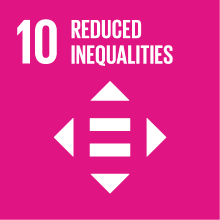HISTORY OF PHOTOGRAPHY
- Academic year
- 2022/2023 Syllabus of previous years
- Official course title
- STORIA DELLA FOTOGRAFIA SP.
- Course code
- FM0189 (AF:376639 AR:209708)
- Teaching language
- Italian
- Modality
- On campus classes
- ECTS credits
- 6
- Degree level
- Master's Degree Programme (DM270)
- Academic Discipline
- L-ART/03
- Period
- 3rd Term
- Course year
- 1
- Moodle
- Go to Moodle page
Contribution of the course to the overall degree programme goals
Expected learning outcomes
Students will acquire an in-depth knowledge of a series of questions related to the history and theory of photography, with a special focus on the practices of reappropriation, retouch and redistribution of images in the contemporary iconosphere.
2. Capacity of applying knowledge and understanding:
Students will learn how to approach the history and theory of photography from the vantage point of research perspectives which have developed during the last 10-15 years, such as visual culture and media studies. Students will also learn how to discuss some of the issues that will be tackled during the course through the writing of a paper.
3. Capacity of formulating judgments:
Students will learn how to develop original or partly original ideas and how to elaborate a critical judgment concerning certain aspects of the history and theory of photography, with a special focus on the topics discussed during the course.
4. Communicational skills:
Within the framework of seminar-like discussions, students will learn how to articulate ideas with the appropriate language and share them with the professor and fellow students.
5. Learning skills:
Students will acquire the appropriate conceptual and analytical skills that will allow them to analyse the issues discussed in class. They will learn how to study and discuss written texts, in a constant confrontation with the professor and fellow students, as well as how to write an academic paper, accompanied by notes, bibliography, images and captions.
Pre-requirements
Contents
Referral texts
1. Charlotte Cotton, The Photograph as Contemporary Art, Thames & Hudson, London, 2020 (NB: new expanded edition; 1st ed. 2004).
2. Nicolas Bourriaud, Postproduction. Culture as Screenplay: How Art Reprograms the World, trans. by J. Herman, Sternberg, Berlin, 2002 (or 2nd ed. 2005).
3. The following essays collected in the folder “dispensa” on Moodle (to facilitate understanding, the essays will be examined and discussed during lessons):
• Cristina Baldacci, ‘Re-Presenting Art History: An Unfinished Process’, in Over and Over and Over Again: Reenactment Practicies in Contemporay Arts and Theory, ed. by C. Baldacci, C. Nicastro, A. Sforzini, ICI Berlin Press, Berlin, 2022, pp. 173-82.
• Cristina Baldacci, ‘Recirculation: The Wandering of Digital Images in Post-Internet Art’, in Re-: An Errant Glossary, ed. by C.F.E. Holzhey, A. Wedemeyer, Berlino, ICI Berlin Press, Berlin, 2019, pp. 25-33.
• Cristina Baldacci, ‘Reenactment: Errant Images in Contemporary Art’, in Re-: An Errant Glossary, ed. by C.F.E. Holzhey, A. Wedemeyer, Berlino, ICI Berlin Press, Berlin, 2019, pp. 57-67.
• Benjamin H.D. Buchloh, ‘Allegorical Procedures: Appropriation and Montage in Contemporary Art’, in Artforum, 21.1 (September 1982), pp. 43-56.
• Douglas Crimp, ‘The Photographic Activity of Postmodernism’, in “October”, vol. 15 (inverno, 1980), pp. 91-101.
• Douglas Crimp, ‘Pictures’ (1977), in October, vol. 8 (Spring 1979), pp. 75-88.
• Georges Didi-Huberman, ‘Rendere un’immagine’, in aut aut, 348 (October-December 2010), pp. 6-27 (French ed. 2010).
• Rosalind Krauss, ‘The Originality of the Avant-Garde: A Postmodernist Repetition’, in October, vol. 18 (Autumn 1981), pp. 47-66.
• André Gunthert, ‘La cultura della condivisione o la rivincita delle masse’, in L’immagine condivisa. La fotografia digitale, It. trans. G. Boni, Contrasto, Rome, 2016, pp. 97-112 (original ed. in French 2015).
• Dieter Roelstraete, ‘Ri-fare: l’eterno ritorno dell’oggetto’, in When Attitudes Become Form: Bern 1969/Venice 2013, ed. by G. Celant, exhibition catalogue, Prada Foundation, Milan 2013, pp. 664-667.
Non-attending students and those who skip more than 30% of the lessons - that is, 5 lessons out of 15 - will prepare, in addition to the programme indicated above, one of the following books of their choice:
• Walter Benjamin, The Work of Art in the Age of Its Technological Reproducibility, and Other Writings on Media, ed. by M.W. Jennings, B. Doherty, T. Y. Levin, Harvard University Press, Cambridge (MA), 2008.
• Rosalind Krauss, Le Photographique. Pour une théorie des écarts, Macula, Paris, 1990.
• Nicholas Mirzoeff, How to See the World, Pelican Books, London, 2015.
• Cristina Baldacci, Clio Nicastro, Arianna Sforzini (eds.), Over and Over and Over Again: Reenactment Strategies in Contemporary Arts and Theory, ICI Berlin Press, Berlin, 2022.
NB: It is advisable to contact the professor for specific requests or particular language needs about the bibliography for the exam.
Assessment methods
Type of exam
Teaching methods
Further information
Ca’ Foscari follows the Italian law (Law 17/1999; Law 170/2010) for the support and accommodation services available to students with disabilities or specific learning disabilities. If you have either a motor, visual, hearing or another disability (Law 17/1999), or a specific learning disorder (Law 170/2010) and you require support (classroom assistance, technological aids for carrying out exams or personalized exams, accessible format material, note retrieval, specialist tutoring as study support, interpreters or other), please contact the Disability and DSA office disabilita@unive.it.
2030 Agenda for Sustainable Development Goals
This subject deals with topics related to the macro-area "Poverty and inequalities" and contributes to the achievement of one or more goals of U. N. Agenda for Sustainable Development




